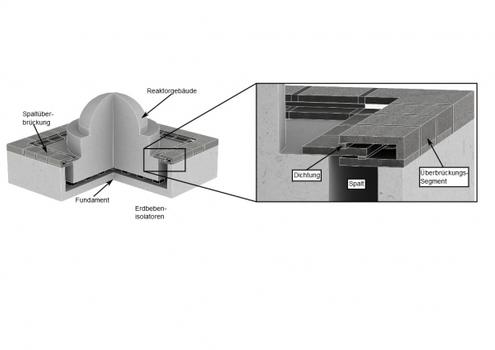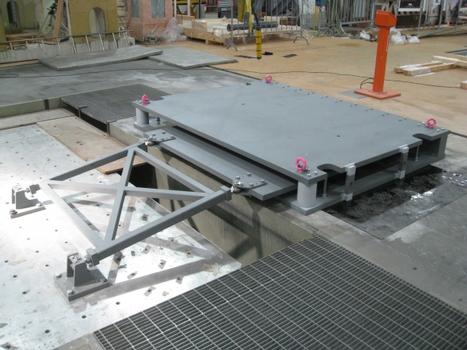Protecting against damages caused by earthquake while leaving the structure accessible
In the framework of the European research project SILER (Seismic-Initiated events risk mitigation in Lead-cooled Reactors), MAURER developed a bridging which resists earthquake. This bridging remains both usable, i.e. the reactor remains accessible, and watertight, e.g. against inundation.
The 4,5-Million-Euro-Project SILER belongs to the Seventh Framework Programme (FP7) of the EU and has as its theme the seismic protection of future nuclear reactors. The reactor catastrophe in Japan showed that it is not only the earthquake that causes severe damages, but in particular also its consequences, in this case the tsunami.
For this project which lasted from 2011 to 2014 a total of 18 participants from research and industry defined two exemplary reactors which for the sake of increasing safety and economy should be cooled with liquid lead. Thereby MAURER was given the task to bridge the gap between reactor structure and surrounding concrete tub in an earthquake proof and watertight manner. This bridging structure has to comply to the strictest requirements in case of earthquake: horizontal displacements caused by earthquake of +/- 300 mm must not cause any damage. In case of displacements of up to +/- 900 mm the reactor structure has to remain accessible while the moat has to be protected against environmental influences, e.g. against inundation or against burning kerosene.
"The big challenge in this project was for us to develop a bridging structure that complies to all requirements set by our partners, such as robustness, versatility, fire protection and watertightness", explains Daniel Rill, R&D Engineer at MAURER.
Telescope plates with sealing
The solution envisages three layers of steel plates which can be shifted against each other in a telescopic manner. Between these plates, sealing elements are arranged which protect against intruding water. Elastomeric bearings with sliding surfaces between the plates ensure an equal distance, such that the sealing elements have always tight contact. The steel plates that surround the reactor structure are in rectangular shape and facilitate displacements between them in all directions. Shear bolts act as mechanical fuses in the anchorages of the upper plates and allow a severing of the upper plate to prevent damages to the sealing system. Even in an extreme earthquake at least one sealing protects the moat.
Simulation and testing
This design was tested via a finite element simulation for its suitability. In early 2014 a prototype was produced, and then tested by the project partner ENEA (Agenzia Nazionale per le Nuove Tecnologie, l'Energia e lo Sviluppo Economico Sostenibile) in Casaccia, Italy. The results confirmed the suitability.
When the project came to a close, in its closing meeting this design was presented to the project partners and evaluated by them very positively. For MAURER, such developments bring about big potential for innovation. "This bridging structure displays of a design which can also be applied for other structures that need protection against earthquake", explains Rill.
The results of all working packages respectively all project partners are to be published at the website www.siler.eu. MAURER's part was sponsored by the EU with 130,000 €.
Structure Types
- About this
data sheet - Product-ID
7235 - Published on:
26/01/2015 - Last updated on:
19/05/2017



 MAURER SE
MAURER SE 